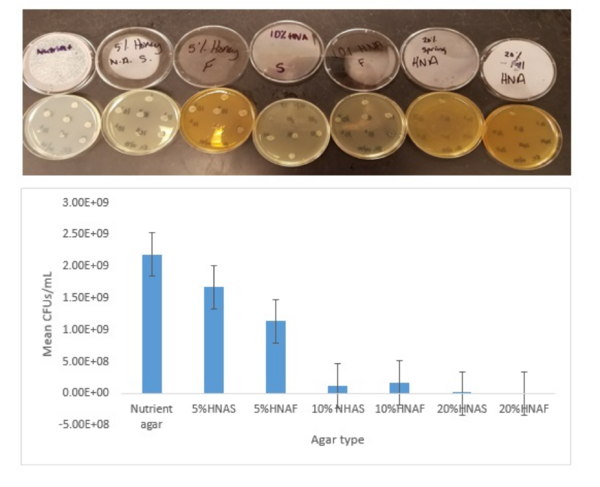Fall and Spring Honeys Are Equally Effective at Reducing Growth Numbers of E. coli, S. aureus, P. aeruginosa, and S. epidermidis
(1) Lowell High School, Lowell, Massachusetts, (2) Middlesex Community College, Bedford, Massachusetts
https://doi.org/10.59720/17-030
An anticipated lack of effective antibiotics available for treating bacterial diseases has led scientists toward researching alternative therapeutics, such as honey. The impact honey has on bacterial growth can be credited to its catalase activity, acidic pH, as well as the sugar and hydrogen peroxide content, but these attributes may vary depending on whether the honey was produced in the spring or the fall season. In this study, locally produced fall and spring honeys were tested to determine whether there was a significant difference in their abilities to limit or prevent bacterial growth of Escherichia coli, Staphylococcus aureus, Pseudomonas aeruginosa, and Staphylococcus epidermidis. ANOVA analyses showed that the growth of all organisms was significantly decreased as the concentration of honey was increased, yet comparisons show there was no statistically significant difference between fall or spring honey in terms of their effectiveness in limiting bacterial growth.
This article has been tagged with: